The oak
This page is only available for mobile

A versatile and useful wood
The oak - stormprrof and light loving
Like some pine trees, the oak is a species of intermediate shade tolerant trees. It does not thrive well in the shade of other trees. The delicate leaves are sensitive to frost, which is why they leaf out late in spring. Their fruits contain a lot of starch, protein, and fat, but also bitter substances. Animal skins can be processed into leather using the tannins in oak bark.
High quality timber
The long-living oak provides valuable wood. It is tough, durable, and resistant. In the past, it was mostly used in construction and for firewood. Today, high-quality furniture is made from solid or veneer oak wood.
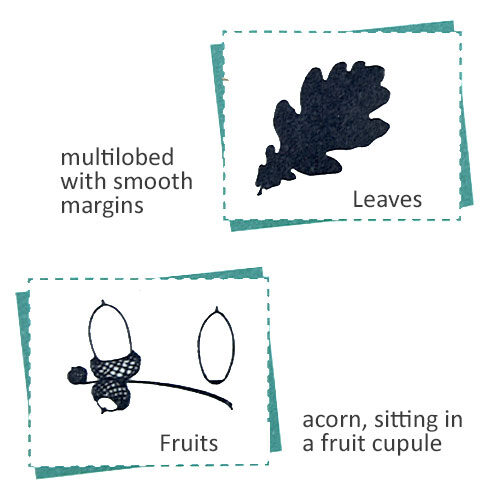
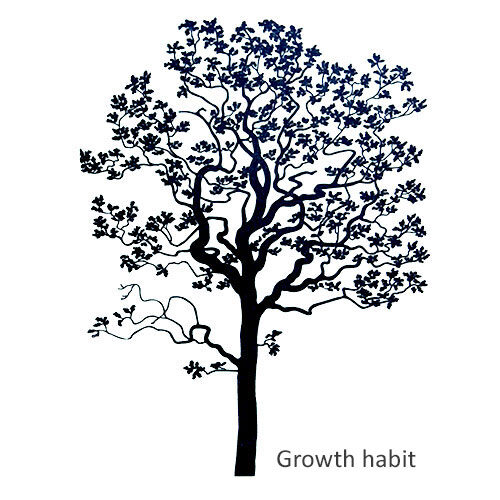
As a symbol of wisdom and steadfastness, the oak adorns many coins and coats of arms.
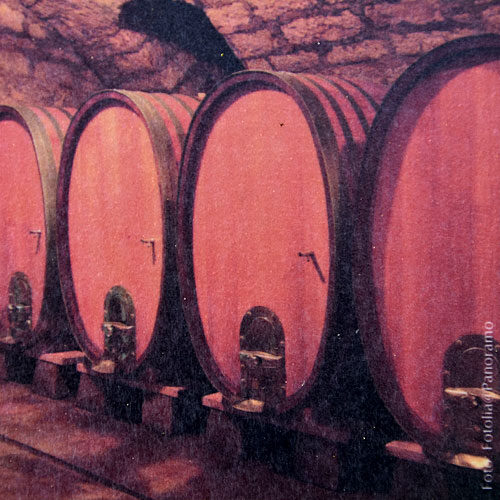
Wine and whiskey barrels are made by coopers from oak wood.
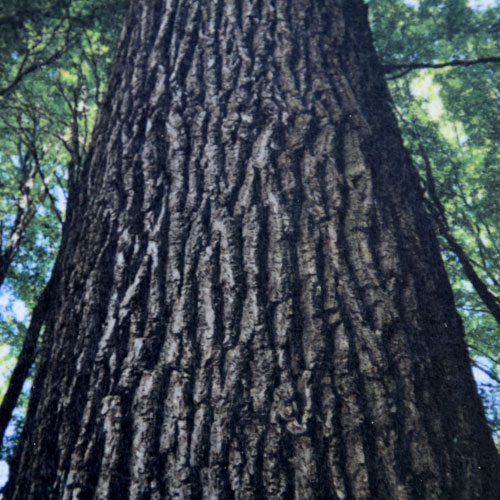
The oak bark contains the tanning agent, tannin, which also acts as an antibiotic.
Controversial hog feeding on the castle mountain in Bad Iburg
In the past, the use of acorn mast without authorization led to serious conflicts in the local area. Around 1060, the area around the fully forested mountain upon which the Iburg Palace sat was under the control of the Bishop of Osnabrück. When the peasants drove their pigs into this forest to feed and collected bags of acorns there, the episcopal administrator tried to prevent this. But he had to flee to Osnabrück from the angry crowd of farmers. Bishop Benno I tried to enforce himself and his property rights with a church ban and the threat of excommunication against the farmers - without success. Accompanied by Meginbald the bailiff of Dissen, he tried to legitimize his right of ownership. The bailiff rode around the mountain and, by means of his own oath, declared the encircled area to be the permanent possession of the bishop and his successors. Bishop Benno I then cleared the mountain to make it habitable again. In 1080, his successor, Bishop Benno II, finally founded the Iburg Monastery, to which a residence was attached.
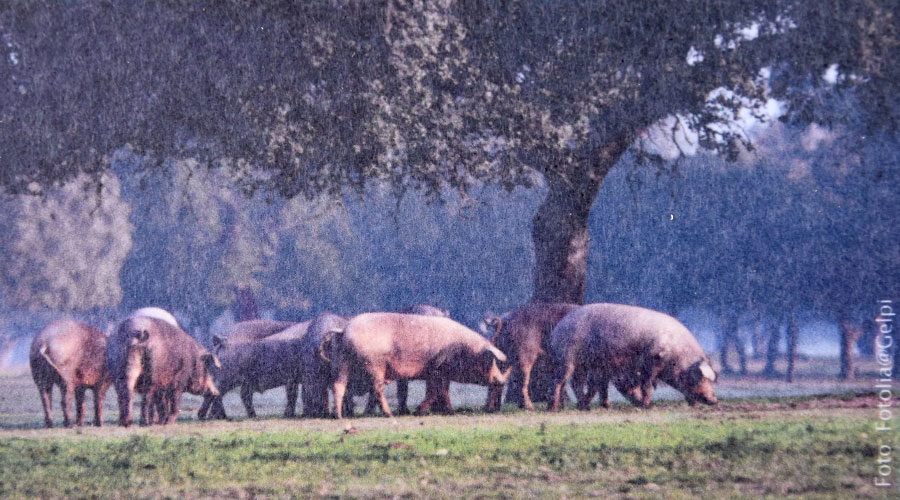

Hello, I am the oak. My wood is hard and does not easily rot. My nutritious fruits are the favorite foods of many forest animals. I can grow very old, over 1,000 years! That's why animals like to live on and in me. My tree hollows are inhabited by birds and bats for a long time. Lots of butterflies and beetles find shelter and food in me – also the rare great capricorn beetle, one of the largest beetles in Europe.
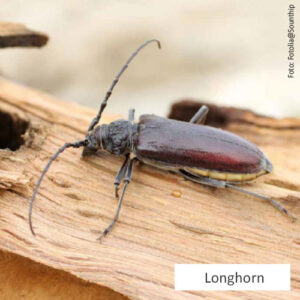
This beetle lives only on old oak trees. It lays its eggs on the bark and the larvae eat themselves into the wood for five years. The beetle itself then lives only about 50 days and is not very mobile. It is threatened with extinction.
Do you know who lives on the oaks?
I like the oak because after I lay my eggs on the underside of its leaf, it forms an oak apple as a nursery for my offspring.
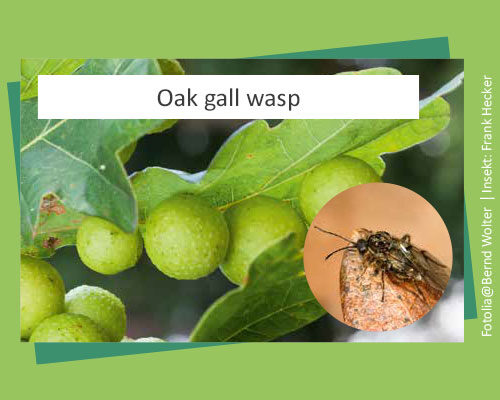
Oak leaves taste good to my caterpillars. For pupation, they even wrap themselves in these leaves.
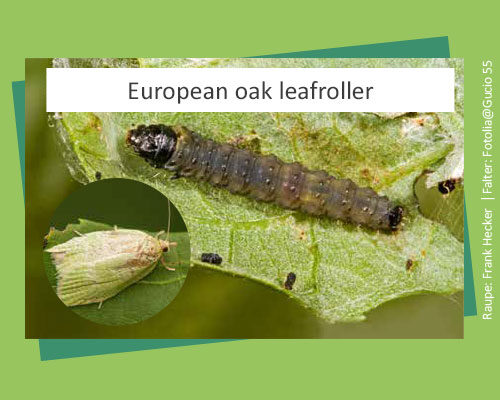
In autumn I collect the nutritious acorns and hide them in the ground for winter.
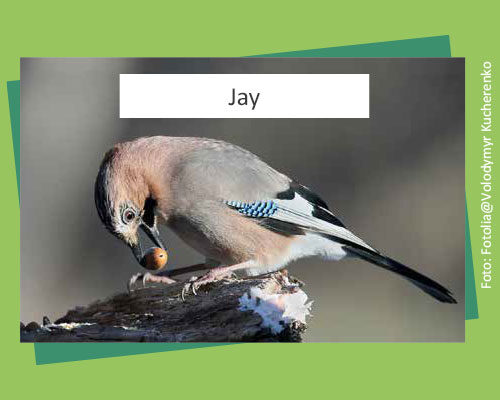
My caterpillars travel in nose-to-tail processions in the tree tops. They have stinging hair that fends off predators and is very uncomfortable for people.
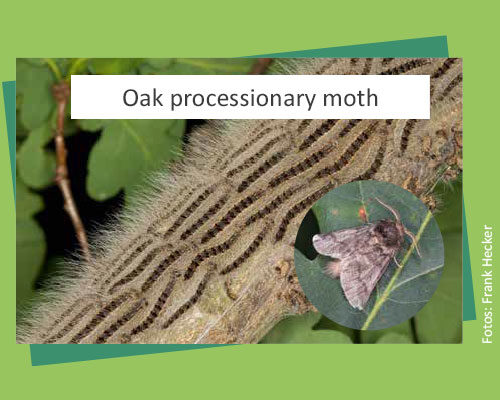
My larvae build cradles of small gnawed wood chips under the oak bark to pupate.
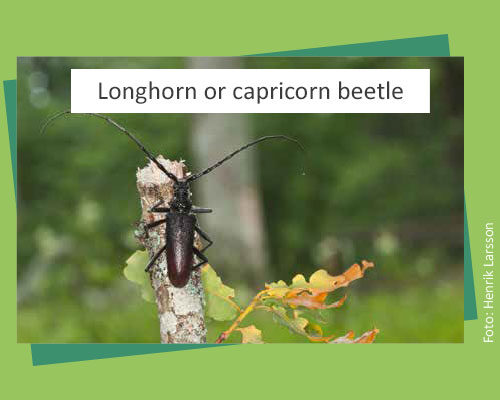
Many insects are such specialists that they are obligatorily bound in their life cycle to one tree species or the presence of dead wood. Vertebrates don’t usually develop such strong dependencies. Rather, they tend to develop a preference for certain plant species.
